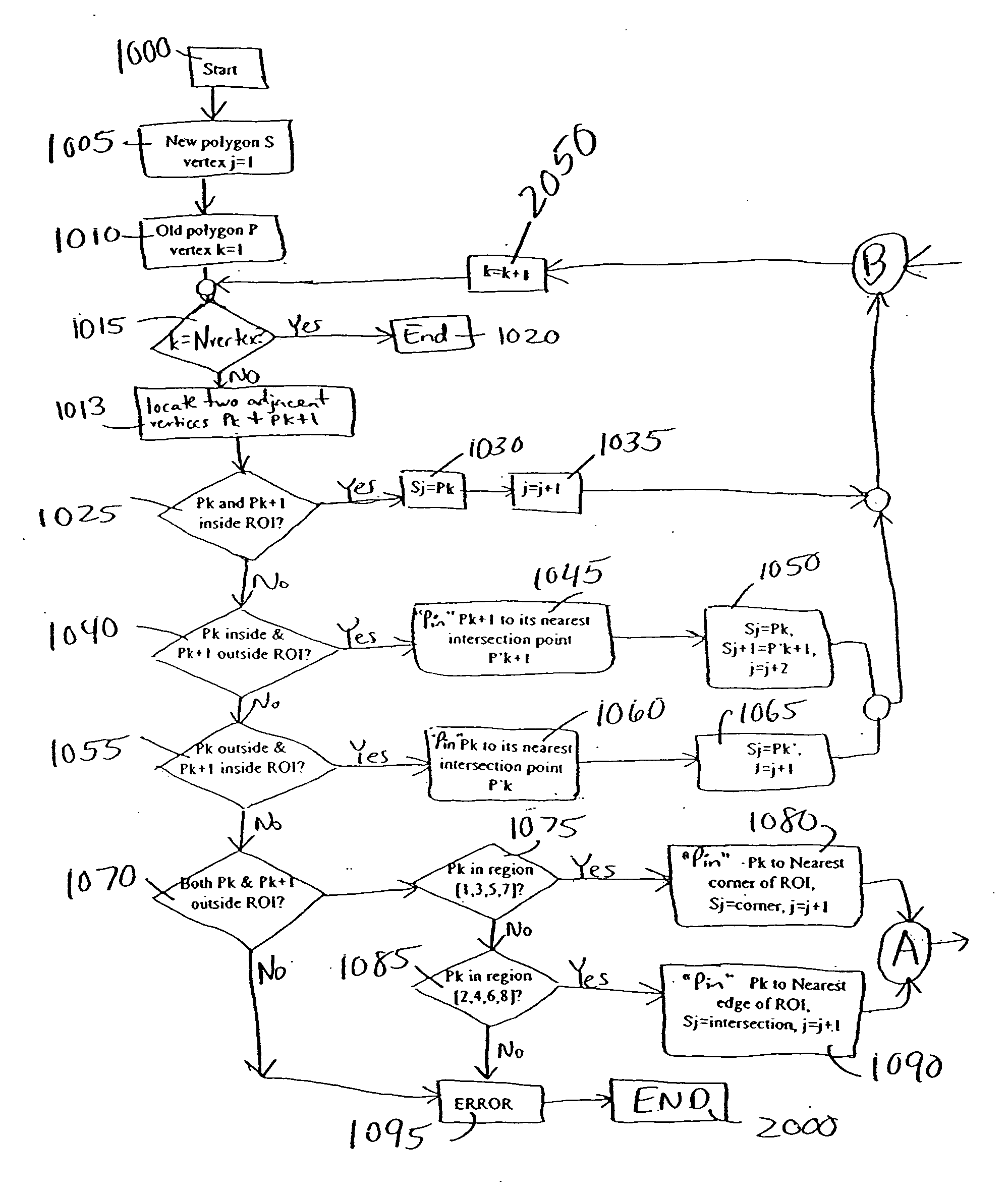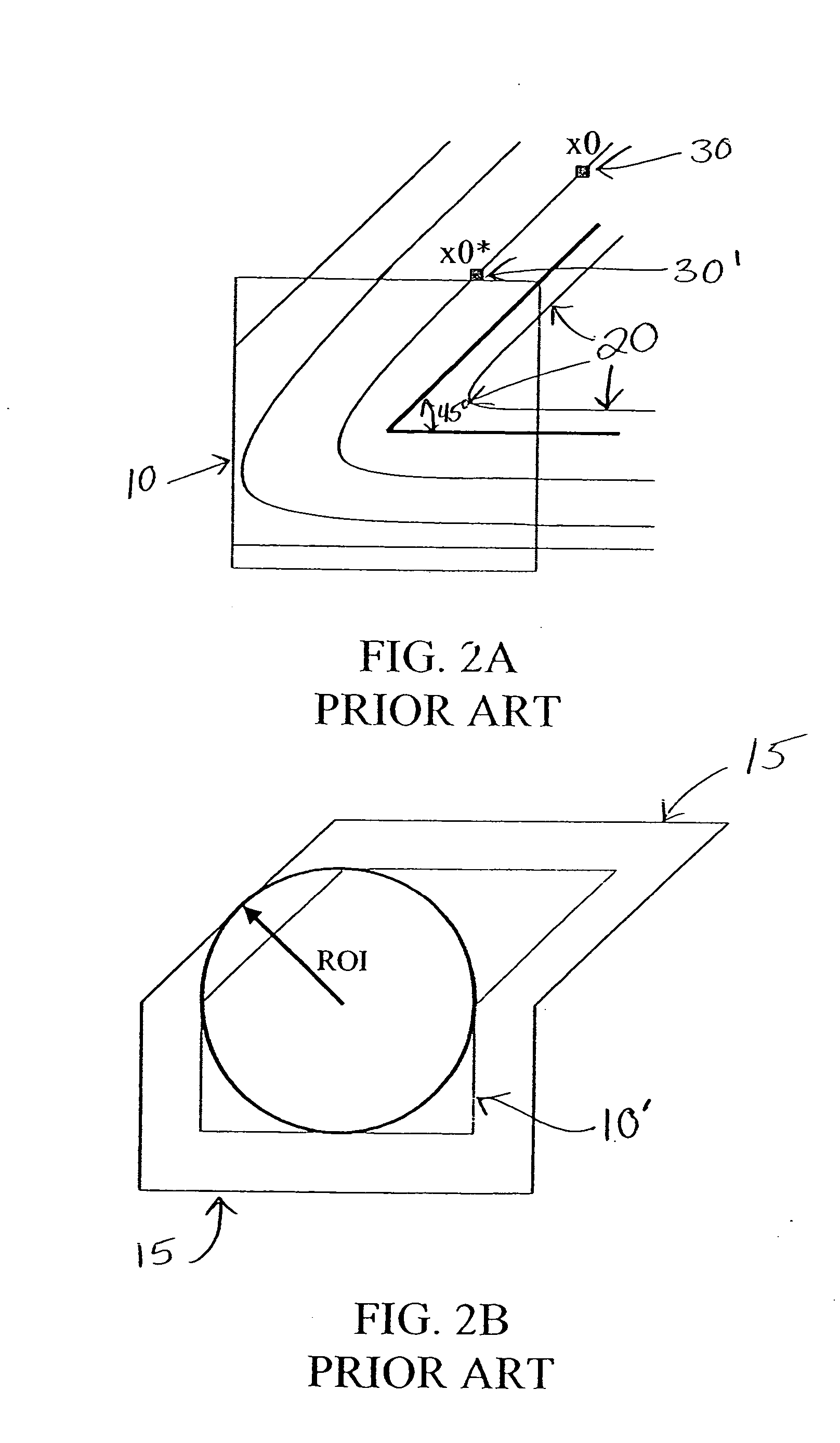Performance in model-based OPC engine utilizing efficient polygon pinning method
a polygon pinning and model-based technology, applied in the field of optical lithography, can solve the problems of requiring a significant amount of memory, and a critical part of the model, and achieves the effect of reducing the number of data structures and numerical overhead, reducing computational time, and facilitating and cost-effective convoluted polygons
- Summary
- Abstract
- Description
- Claims
- Application Information
AI Technical Summary
Benefits of technology
Problems solved by technology
Method used
Image
Examples
Embodiment Construction
)
[0049] In describing the preferred embodiment of the present invention, reference will be made herein to FIGS. 1-5 of the drawings in which like numerals refer to like features of the invention.
[0050] The present invention is directed to model-based optical proximity correction that initially locates a finite geometrical shape within a matrix having a region of interest (ROI) of a model-based simulation. The foregoing model-based optical proximity correction (OPC) is for use in optical lithography to ultimately correct for any distortions on a photomask having desired circuit patterns, for the accurate projection thereof onto photoresist-coated wafers.
[0051] It should be understood that the invention is suitable for use with any finite geometrical shape. In the preferred embodiment, the finite geometrical shape is a polygon. A polygon in a design is typically doffed by a set of vertex (vertices) and the corresponding sequence, for example by convention the left hand side of the f...
PUM
 Login to View More
Login to View More Abstract
Description
Claims
Application Information
 Login to View More
Login to View More - R&D
- Intellectual Property
- Life Sciences
- Materials
- Tech Scout
- Unparalleled Data Quality
- Higher Quality Content
- 60% Fewer Hallucinations
Browse by: Latest US Patents, China's latest patents, Technical Efficacy Thesaurus, Application Domain, Technology Topic, Popular Technical Reports.
© 2025 PatSnap. All rights reserved.Legal|Privacy policy|Modern Slavery Act Transparency Statement|Sitemap|About US| Contact US: help@patsnap.com



